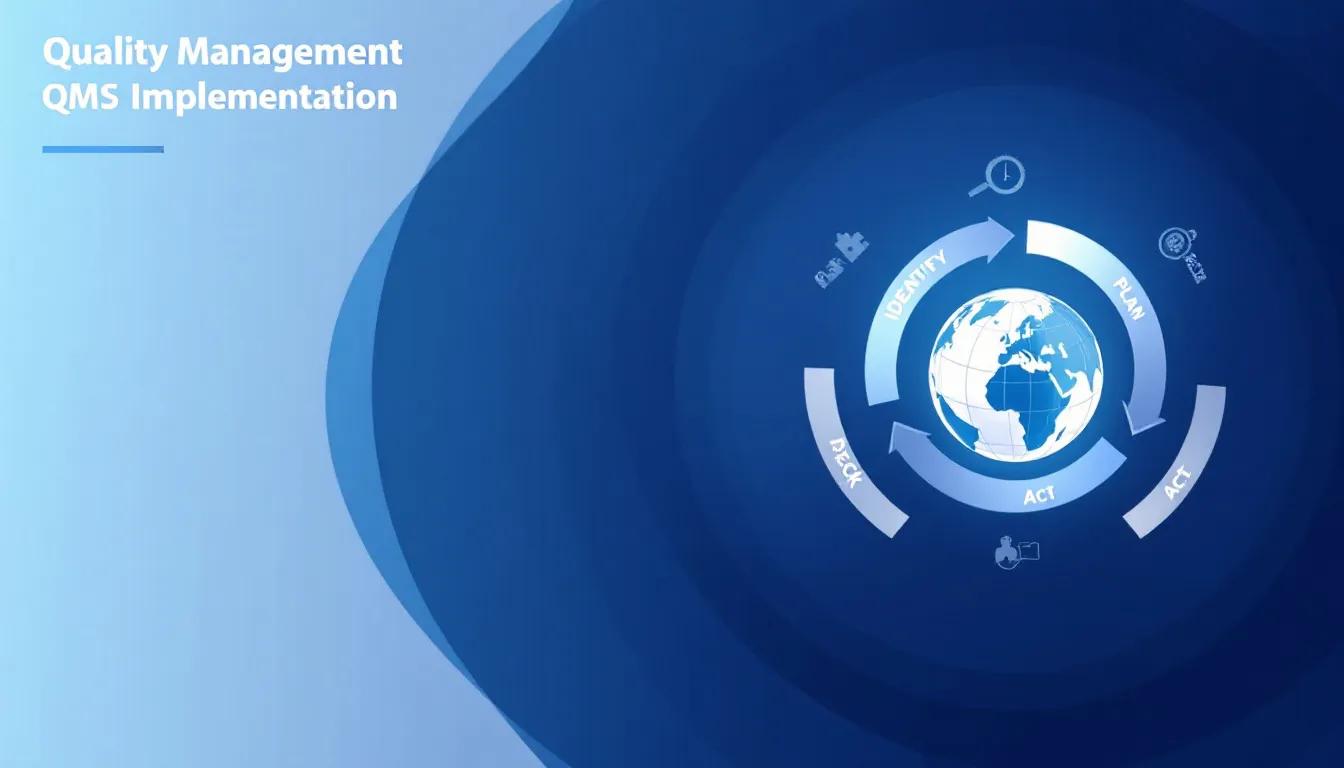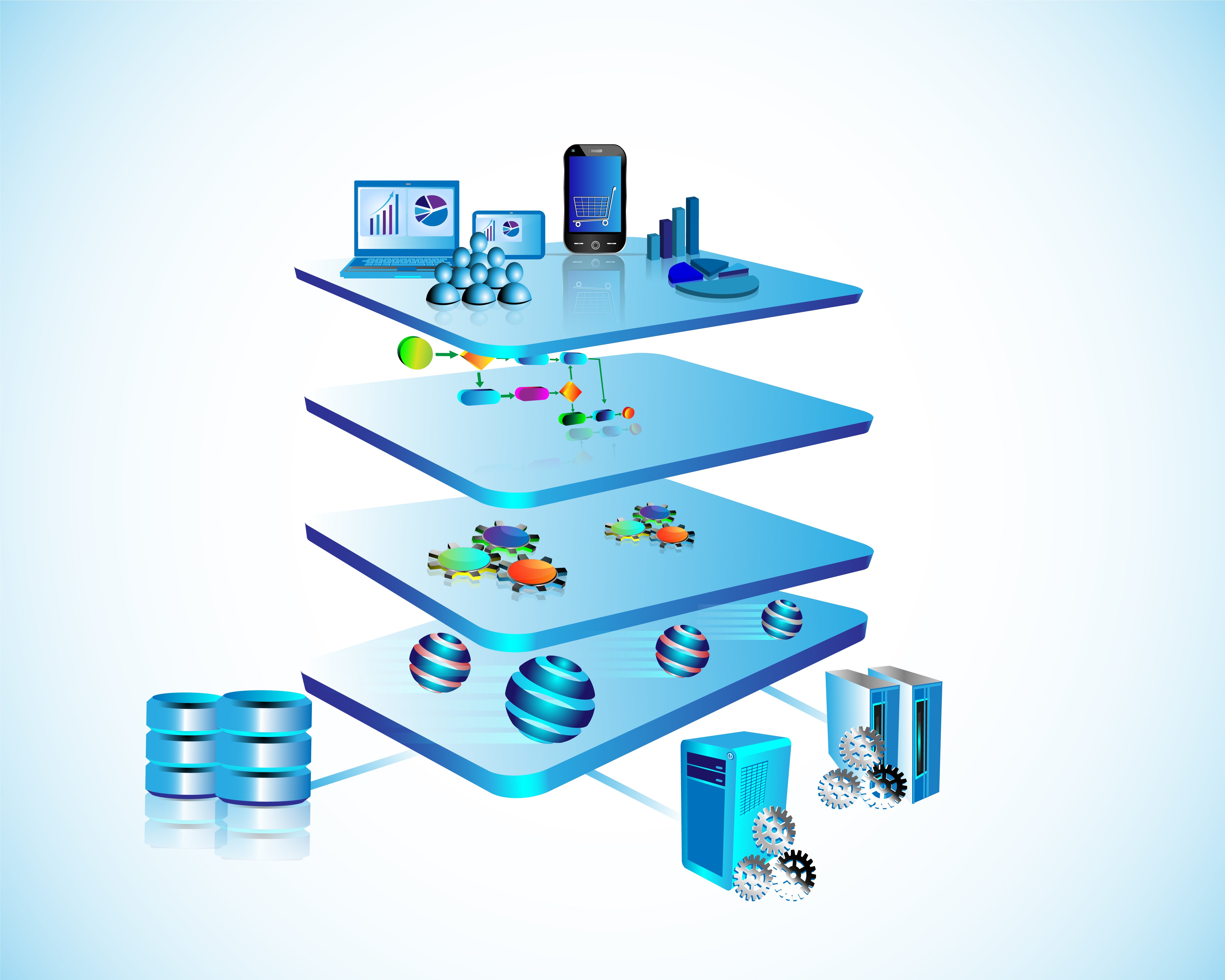Top Strategies for Successful QMS Implementation
Want to improve quality and compliance in your organization?
This guide will help understand how to implement a QMS software effectively. You’ll learn about initial audits, setting quality policies, assembling a quality manager team, and ensuring continuous improvement.
Key Takeaways
-
Start with a comprehensive initial audit to identify gaps in the existing quality management processes before implementing a QMS.
-
Clearly define quality objectives and policies, ensuring they are SMART to guide continuous improvement within the organization.
-
Assemble a diverse, cross-functional implementation team and provide thorough training to ensure effective adoption and integration of QMS practices.
Conduct an Initial QMS Audit

Before: The journey to a successful QMS implementation begins with a thorough initial audit. This structured examination is designed to identify areas for improvement in your organization’s existing quality management processes. Understanding the scope and objectives of the audit is crucial for pinpointing specific elements of the QMS that need evaluation. This initial step sets the stage for a well-informed implementation process by highlighting gaps and opportunities within your current quality system.
After:
-
Begin with a thorough initial audit to identify areas for improvement in your organization’s existing quality management processes.
-
Understand the scope and objectives of the audit to pinpoint specific elements of the QMS that need evaluation.
-
Use the findings from the audit to highlight gaps and opportunities within your current quality system, setting the stage for a well-informed implementation process.
Gathering supporting evidence and preparing to answer auditor questions helps build trust and ensures a smooth audit process. A well-conducted initial audit not only paves the way for compliance with legal and industry-specific requirements but also helps avoid potential penalties.
This foundational step lays the groundwork for a robust quality management system.
Traditional Waterfall implementation focuses on completing distinct phases sequentially, which can lead to inflexibility. Agile methodology, by contrast, emphasizes iterative and incremental progress. Agile allows organizations to break the QMS implementation into smaller, manageable sprints, delivering value quickly, adjusting to feedback, and accommodating evolving requirements. This iterative approach is ideal for dynamic and complex environments where flexibility and collaboration are critical to success.
Define Quality Objectives and Policy

Once the initial audit is complete, the next step is to define your quality objectives and policy. A quality policy is a cornerstone document that establishes your organization’s commitment to quality and serves as a guiding principle for all quality-related activities. Tailor the policy to reflect your organization’s unique purpose and context, integrating core values and strategic direction. Address how you plan to meet and exceed customer expectations, and comply with relevant standards when crafting this policy.
With Agile, quality objectives are dynamic and can evolve throughout the implementation process. Teams should prioritize objectives in the initial sprints, refining them iteratively based on ongoing feedback and organizational needs.
Derived from this policy, quality objectives guide your organization in achieving specific improvements to internal processes. Quality objectives must be prioritized and revisited at the end of each sprint. Agile ensures objectives remain specific, measurable, and achievable, while adapting to changing organizational priorities.
Clearly defining your total quality management system, policy and objectives sets a solid foundation for an effective quality management system that drives continuous improvement.
Assemble a Cross-Functional Implementation Team
A successful QMS implementation requires a dedicated and diverse team. Management support helps avoid cutting corners and ensures commitment throughout the project. The size and complexity of your organization will influence the composition of your implementation team. Involve staff from every department to ensure broad-scale buy-in and address the needs of those directly affected by the QMS.
Communicating effectively across departments is crucial for achieving quality management goals. Determine roles and responsibilities within the implementation team based on individual expertise. Forming a cross-functional team brings together a comprehensive range of skills and perspectives vital for a holistic and effective QMS implementation.
In an Agile QMS implementation, the team adopts roles such as Product Owner, Scrum Master, and cross-functional contributors. The Product Owner ensures alignment with business goals, while the Scrum Master facilitates sprint progress and removes impediments. Regular sprint reviews ensure team alignment and stakeholder input.
Document Key Processes and Procedures
Documentation is the backbone of any serious quality management system implementation. Documenting your processes and procedures properly ensures consistency, clarity, and accountability. This step provides clear guidelines on executing various processes, laying the groundwork for effective QMS implementation. Follow a hierarchical structure in documentation, starting with the quality manual, which includes the quality policy, objectives, and a description of how requirements are met.
Work instructions, the most detailed documents in a QMS, outline specific tasks to ensure consistency. Maintain up-to-date version control logs to ensure accuracy and traceability in quality management documentation. Documenting key processes and standard operating procedures creates a clear and structured framework that supports the ongoing effectiveness of your QMS.
Agile documentation evolves iteratively. Initial documentation should focus on critical processes, with subsequent sprints expanding and refining documentation based on real-time feedback and practical application. This approach minimizes the risk of over-documentation and ensures alignment with operational needs.
Select Appropriate QMS Software

Selecting the right QMS software is a critical step in the implementation process. Start by thoroughly assessing your specific organizational needs. Consider customer feedback and vendor reputation in your selection. The software must comply with regulatory requirements to avoid legal and operational risks. Ensure the software integrates quality processes and improves productivity.
Agile emphasizes iterative evaluation. Conduct pilot sprints using shortlisted QMS software to test functionality and integration in real-world scenarios. Use feedback from these pilots to make informed software decisions.
Selecting appropriate QMS software ensures that your quality management system qms is both effective and adaptable.
Train Employees on QMS Principles

Training on QMS principles is key to success. Comprehensive training gives employees the knowledge and skills to manage quality. The training should cover specific procedures and tools. And the underlying principles of quality management. Use step by step guides, videos and internal wikis to make it more engaging.
Regular training keeps employees aware of their responsibilities and aligned to compliance goals. Engage employees in quality management and they will meet quality standards.
Invest in training and employees will contribute to the QMS and drive continuous improvement.
Training should be phased and iterative. Start with basic QMS principles in the first sprints and add more advanced training modules based on employee feedback and effectiveness of earlier training. Agile’s iterative training approach means employees get the knowledge as they need it, no information overload.
Implement QMS Across the Organisation
Agile QMS implementation is phased through iterative sprints. Start by deploying critical QMS processes in a pilot area, gather feedback and refine before rolling out to other departments. This incremental approach reduces risk and makes it smoother.
Link new processes to existing ones for a smooth integration. Implementing QMS into existing processes means your organisation will have a consistent approach to quality management and compliance and operational excellence.
Monitor Performance with Key Performance Indicators
Monitoring performance with Key Performance Indicators (KPIs) is key to a QMS. KPIs are metrics that measure how well your QMS is performing against its goals. These include defect rates, overdue issues and rework costs. Tracking these metrics will measure progress against quality objectives and identify areas for improvement.
Ongoing monitoring and analysis of KPIs drives the QMS enhancement process improvements. This ensures your quality management system remains effective and aligned to organisational goals and a culture of continuous improvement.
Agile has KPI reviews during sprint retrospectives. Teams should review performance metrics at the end of each sprint and make iterative improvements to processes and align KPIs to evolving quality objectives.
Continuous Improvement and Corrective Actions
A robust corrective and preventive action (CAPA) system manages and tracks the improvements within your QMS. Agile relies on continuous improvement through retrospective analysis. At the end of each sprint use feedback and performance data to identify opportunities for corrective and preventive actions so the QMS evolves iteratively. Root cause analysis identifies what needs to be addressed by corrective and preventive actions to prevent recurrence.
Staff involvement in the continuous improvement process is key to the CAPA system. A culture of continuous improvement means your QMS will evolve and adapt to changing needs and standards.
Run Regular Internal Audits
Regular internal audits keeps your QMS effective over time. These are practice runs that identify weaknesses before official external audits happen. In Agile internal audits can be done iteratively as part of sprint cycles. Regular sprint-based audits will keep you compliant and give you actionable insights for QMS improvement.
Record audit findings and corrective actions to measure QMS effectiveness. Documentation proves regulatory compliance and quality management standards.
Management Review and Commitment

Agile reviews are part of sprint planning and retrospectives. Regular check ins ensure the QMS is aligned to the strategy and management is actively involved in iterative improvement. These reviews get top management involved and ensure the QMS supports the overall business strategy. Top management buy in is key to achieving QMS goals and resource allocation.
Monitor customer feedback and complaints to show product and service quality, issues and customer satisfaction, to improve customer satisfaction. Compliance documentation shows the organisation is committed to quality and following procedures.
Regular reviews ensure your QMS stays aligned to business objectives and continues to improve.
Testing and Validation
The testing and validation phase ensures your QMS works and is aligned to the organisation. It protects the integrity of your QMS by finding gaps and areas for improvement. Collect feedback during testing to show workflow impact and room for improvement.
A small launch tests capabilities, measures feature adoption and tracks compliance, quality and performance. Thorough testing and validation ensures your QMS meets regulatory and customer requirements and delivers consistency.
Use Technology for Real Time Data and Automation
Advanced technologies like AI, machine learning and IoT are transforming Quality Management Systems by providing real time data and automation. AI improves quality control by automating mundane tasks and finding patterns to improve efficiency. Using AI for predictive analytics allows for early detection of potential quality issues and proactive action.
IoT sensors provide real time data on process parameters. This allows for immediate detection of out of spec conditions. Together these technologies make QMS better by improving data analysis, efficiency and overall quality management.
Using technology enables your QMS to handle modern quality challenges and continuous improvement.
Agile means using real time data to inform sprint planning and continuous improvement. Technologies like IoT and AI can support this by providing feedback during each sprint so you can adjust the QMS.
Compliance Documentation
Compliance documentation shows you are following regulatory standards and overall quality assurance. This documentation shows the history of your QMS and regulatory compliance. Detailed records of compliance activity shows the organisation is committed to quality and following procedures.
Keeping compliance documentation up to date and accurate ensures your QMS works and is aligned to industry regulations. This builds trust with stakeholders and ensures long term success of your quality management system.
Compliance documentation should be created and refined iteratively. Each sprint should have tasks to update or expand documentation as processes change so compliance is maintained without delay.
Conclusion
In summary implementing a Quality Management System using Agile is a dynamic and iterative process that is flexible, collaborative and continuous improvement. By going Agile your organisation can adapt to change and deliver value at every stage of QMS implementation.
Follow this guide and you can manage the complexity of QMS implementation and drive continuous improvement for your quality managers. Remember a QMS in place means compliance to industry standards and customer satisfaction, operational efficiency and business success. Get started today and change your quality management for the better.
If you've enjoyed this guide, check out our guide on LIMS Implementation.
FAQ’s
What is the first step in implementing a QMS?
The first step in implementing a Quality Management System (QMS) is to do an initial audit of your current processes and written procedures. This will help you identify areas for improvement and set the foundation for implementation.
How do you get employee buy in to QMS?
To get employee buy in to Quality Management Systems (QMS) provide training and updates and keep communication open with employees. This will create a knowledgeable workforce aligned to the organisation’s quality objectives.
What are the benefits of QMS software?
QMS software integrates quality processes, increases productivity, ensures compliance and manages quality and non quality documents. This leads to more product and process improvement and more streamlined and efficient business.
Why are internal audits important?
Internal audits are important to ensure your Quality Management System (QMS) is working by identifying weaknesses and resolving issues before they become problems. This means compliance and continuous improvement within the organisation.
How does technology help QMS?
Technology helps QMS by providing real time data, automating tasks and quality control through predictive analytics which helps identify quality issues early. This means more efficient quality management.
Share this
You May Also Like
These Related Stories

Mastering MES Implementation: Key Steps for Success and Efficiency

Best Practices for Manufacturing Systems Integration


No Comments Yet
Let us know what you think